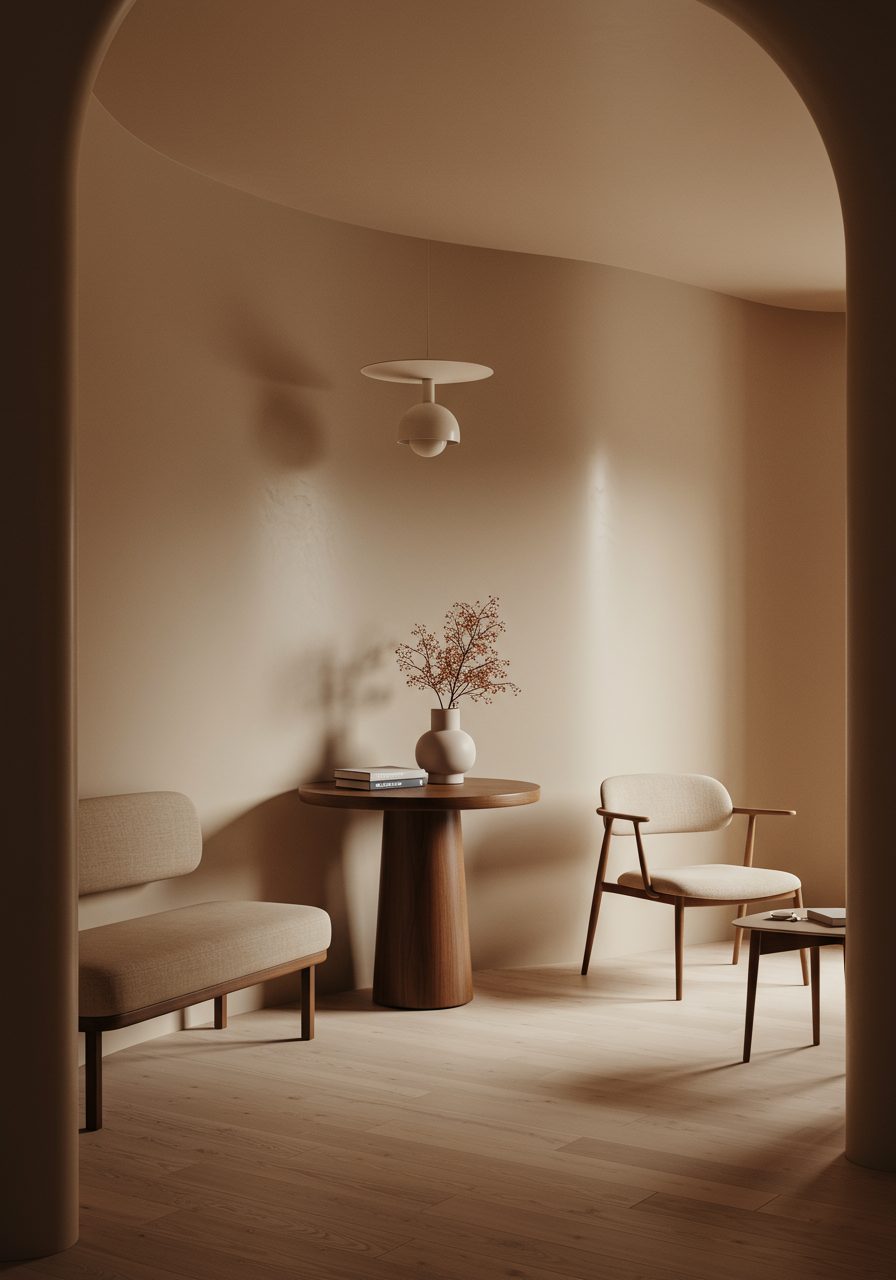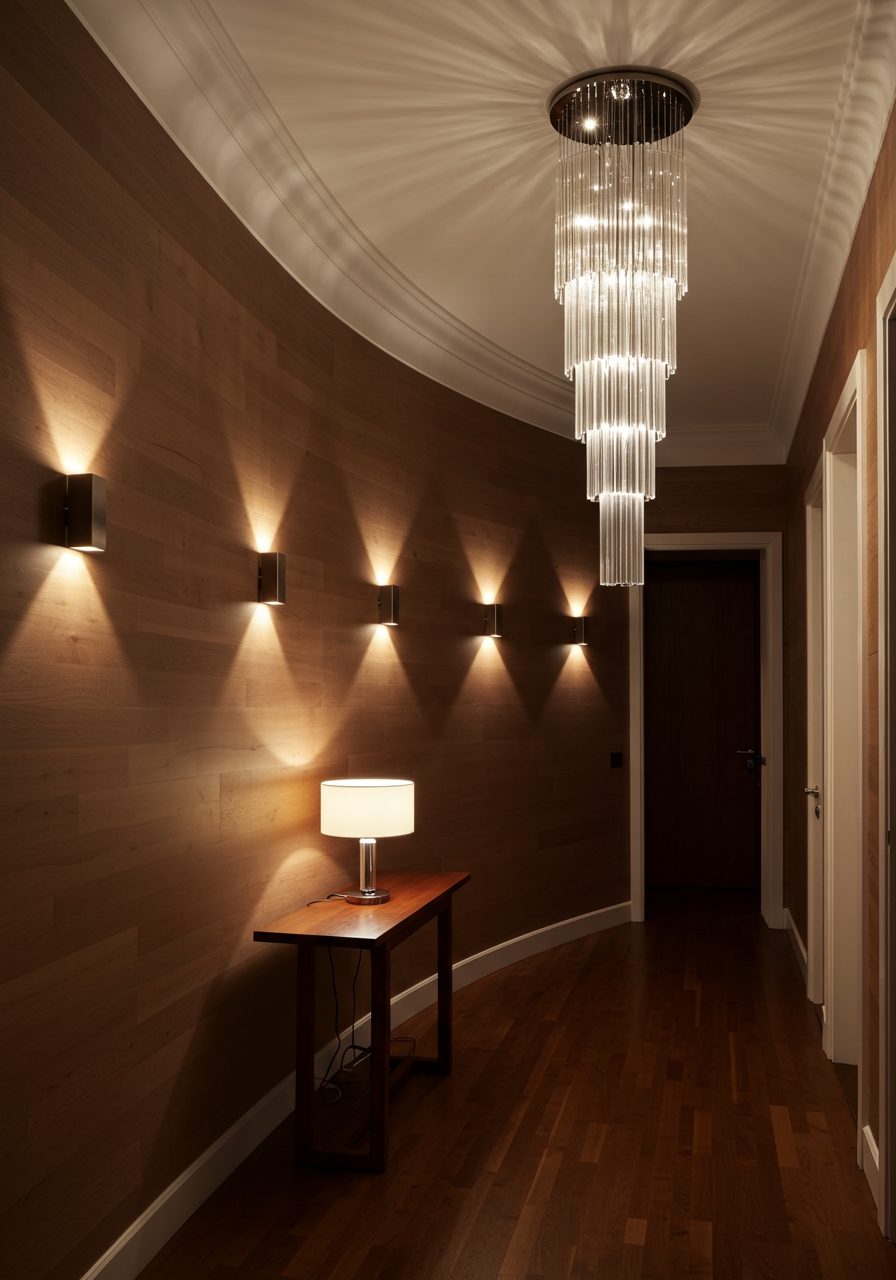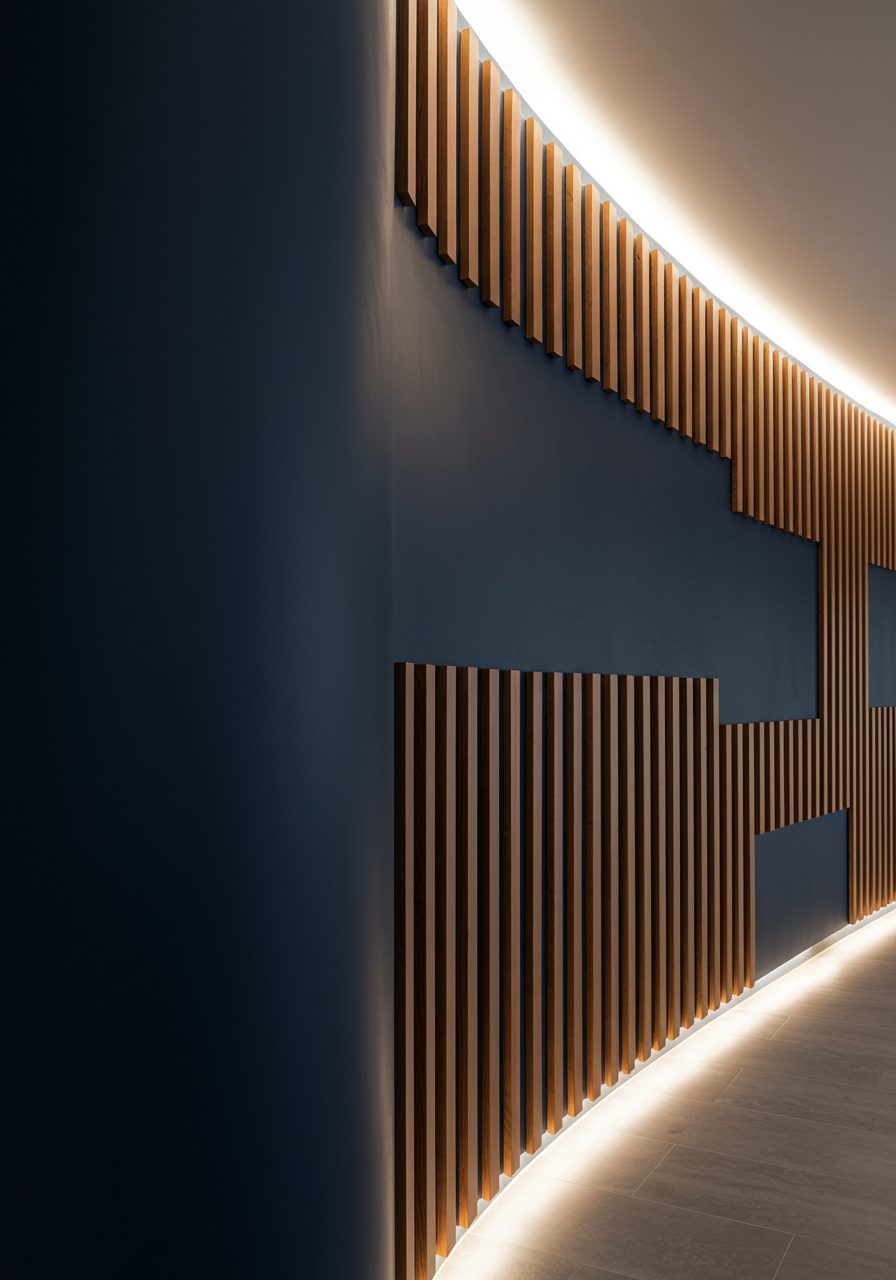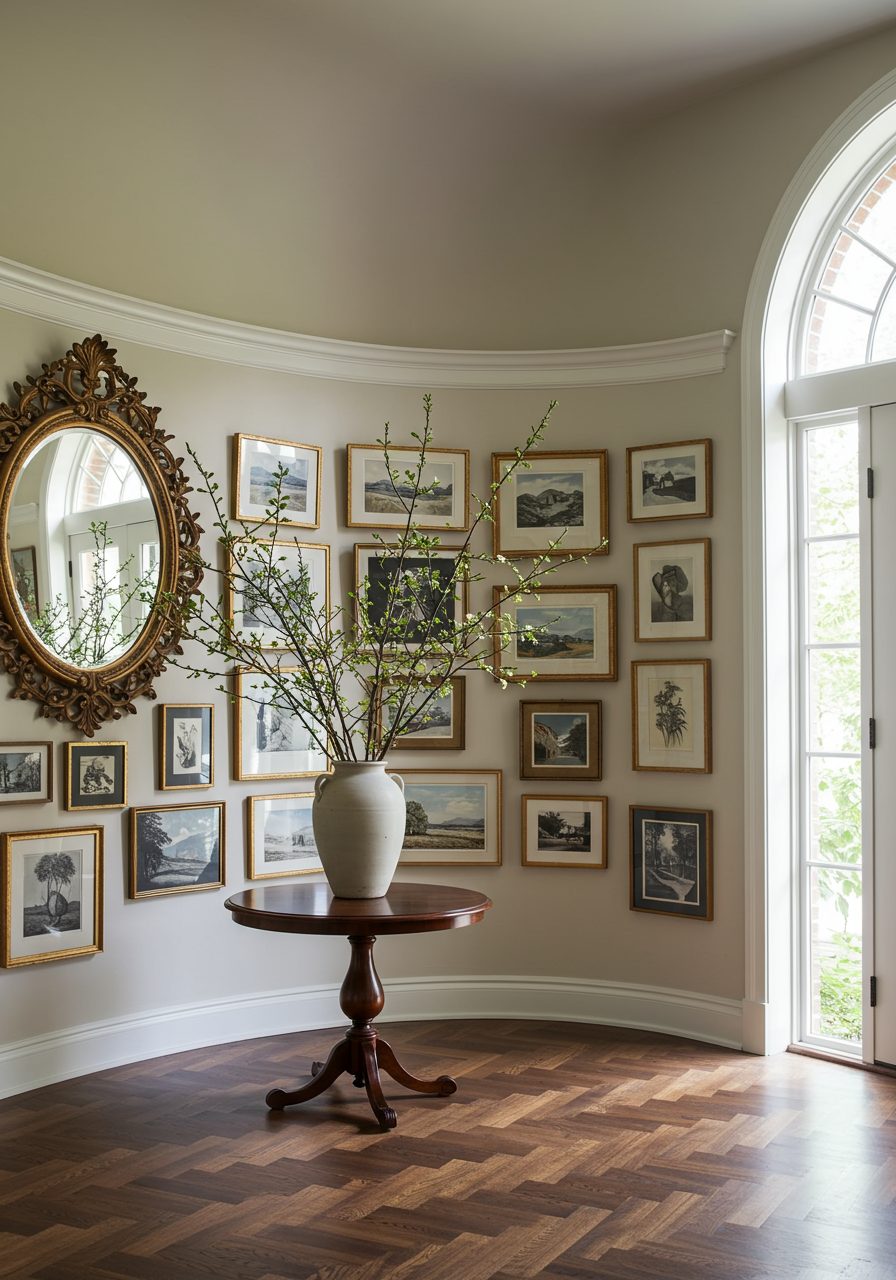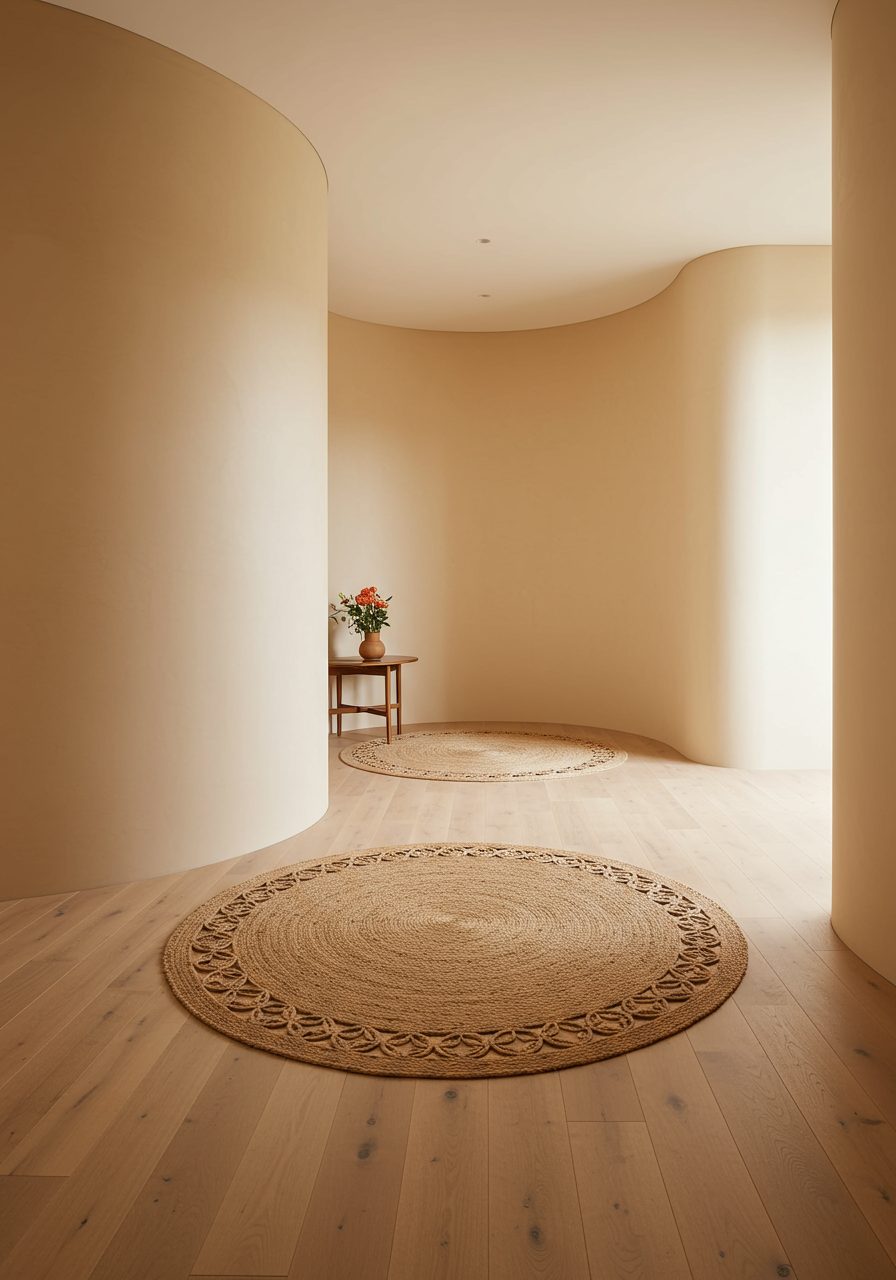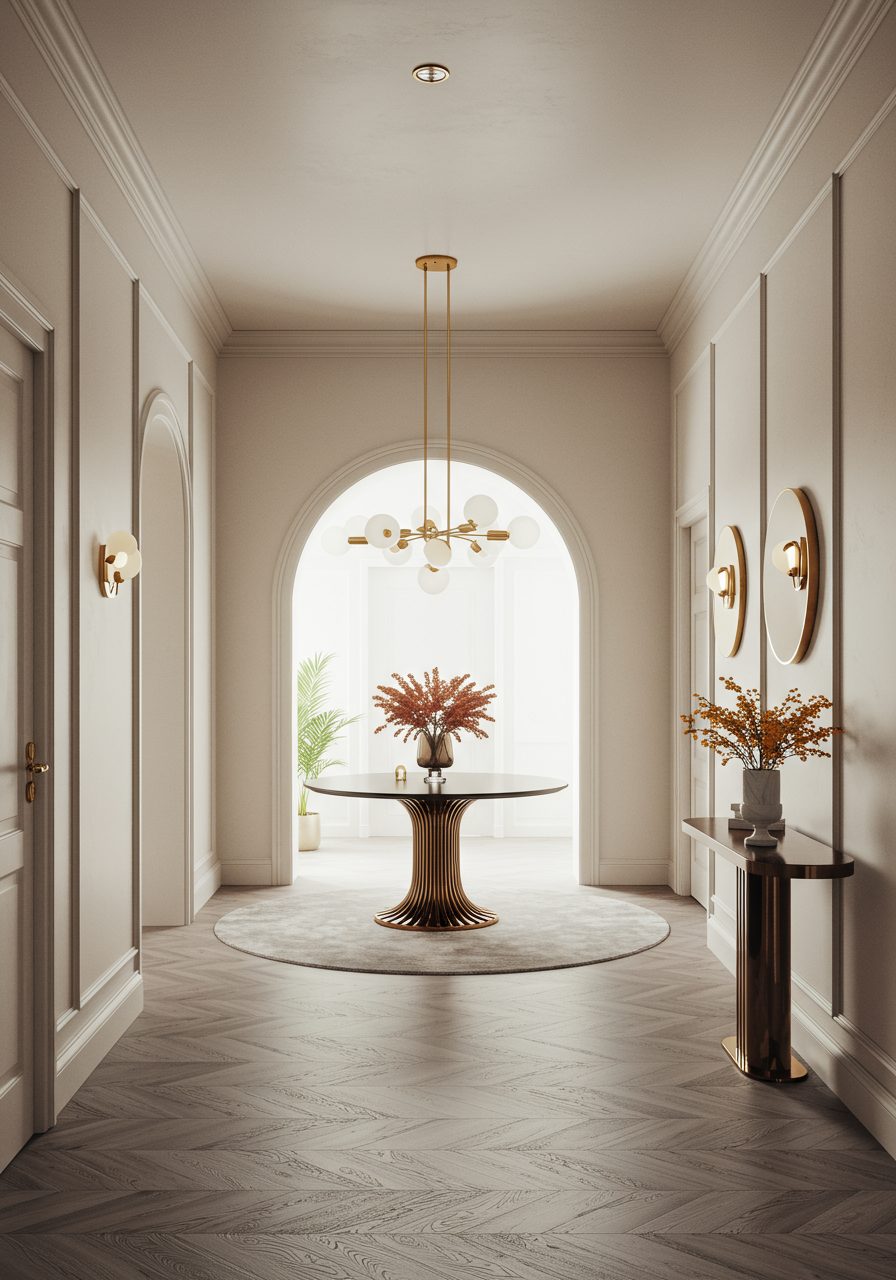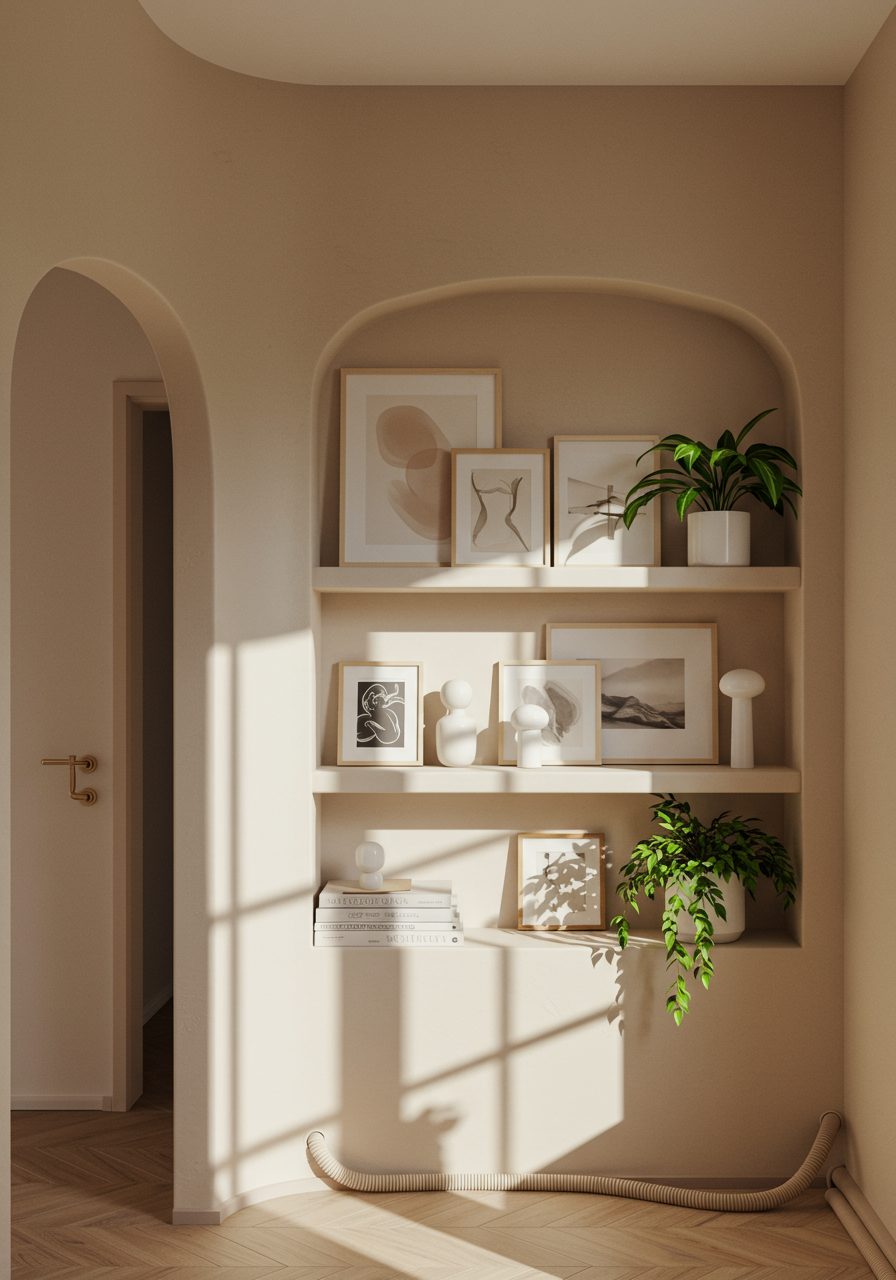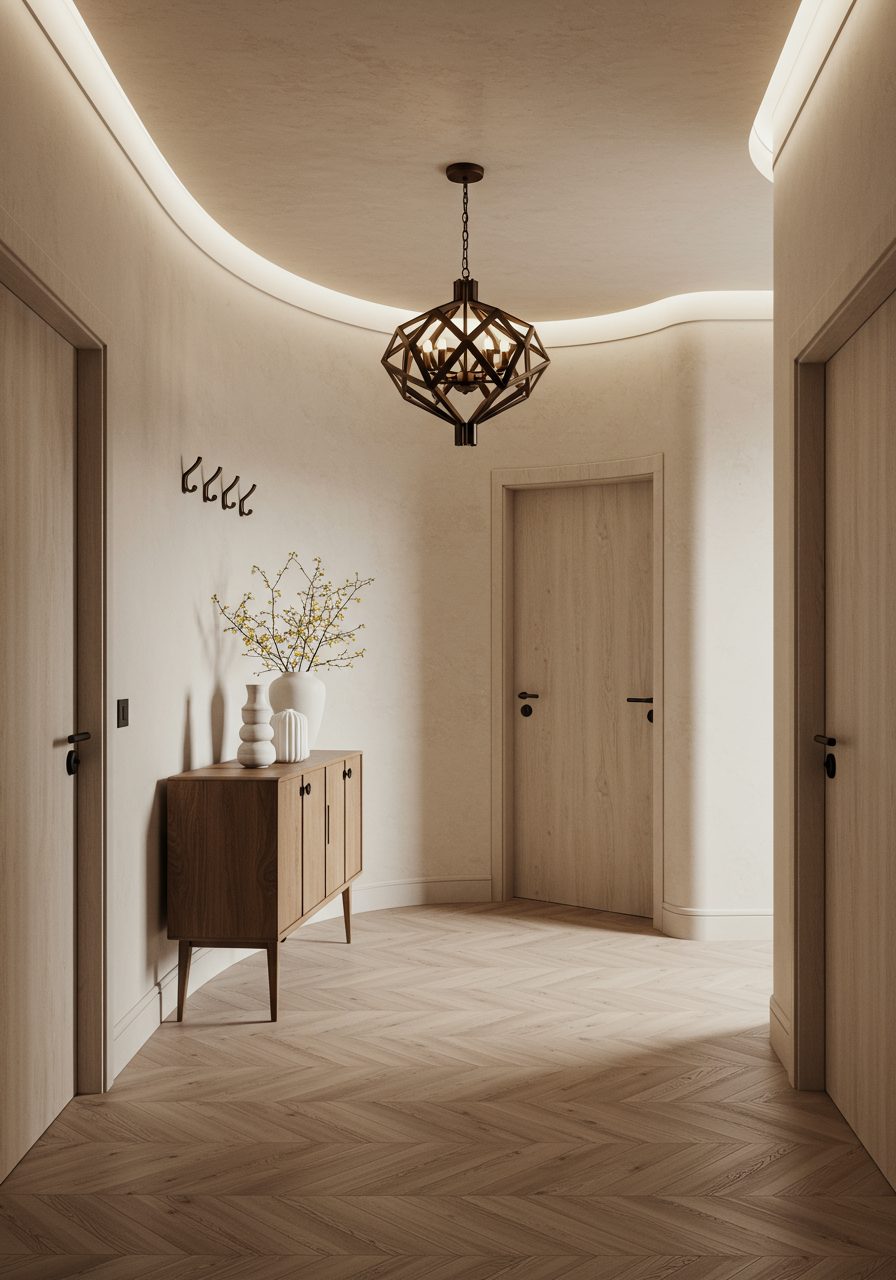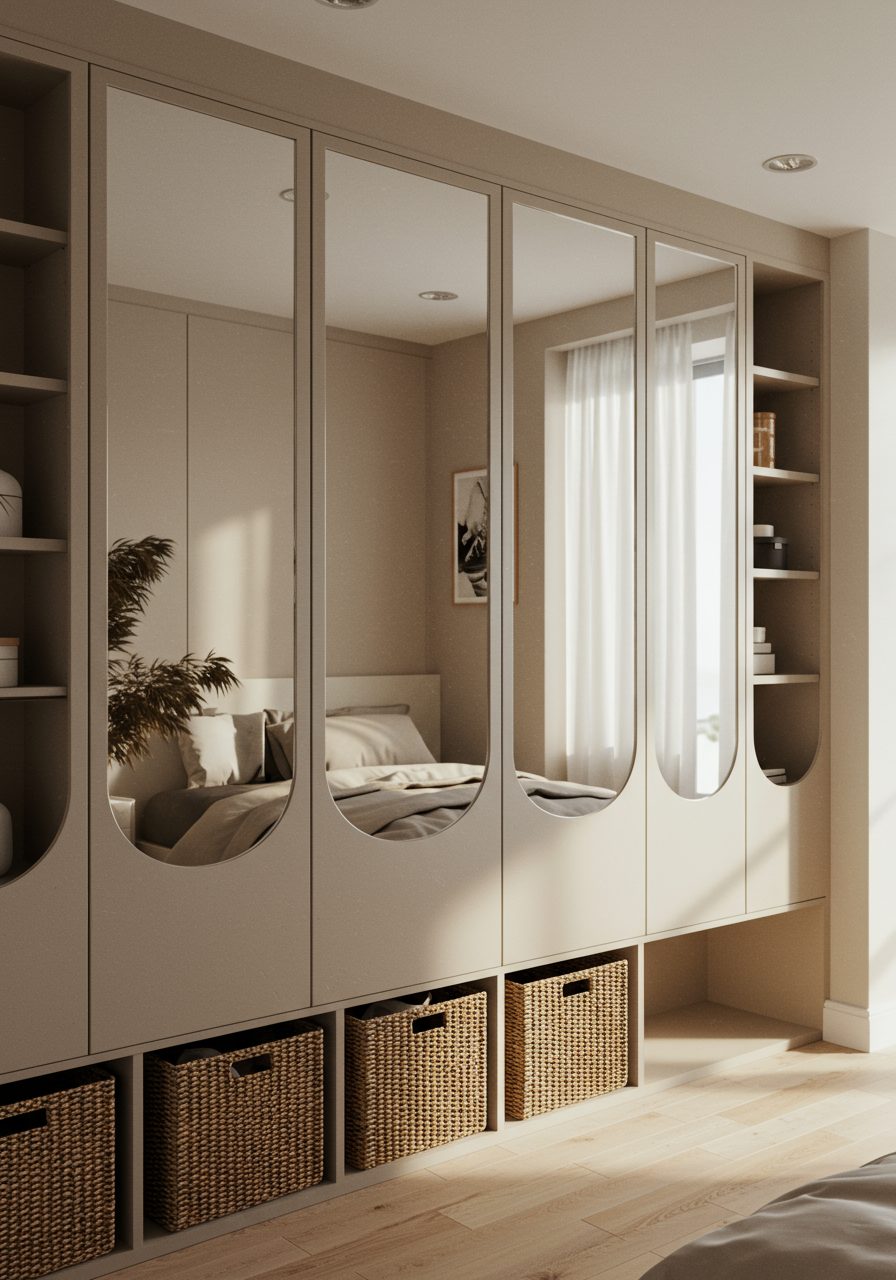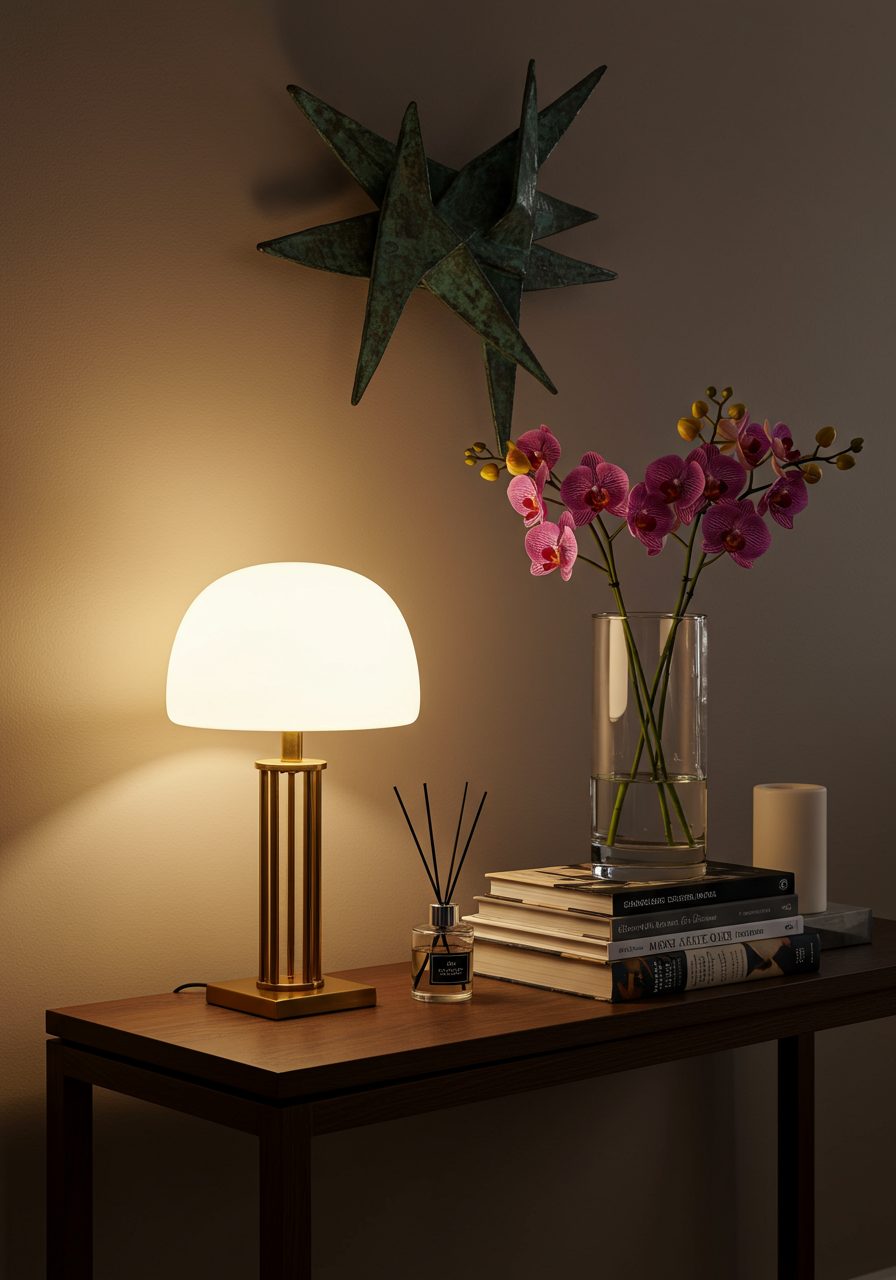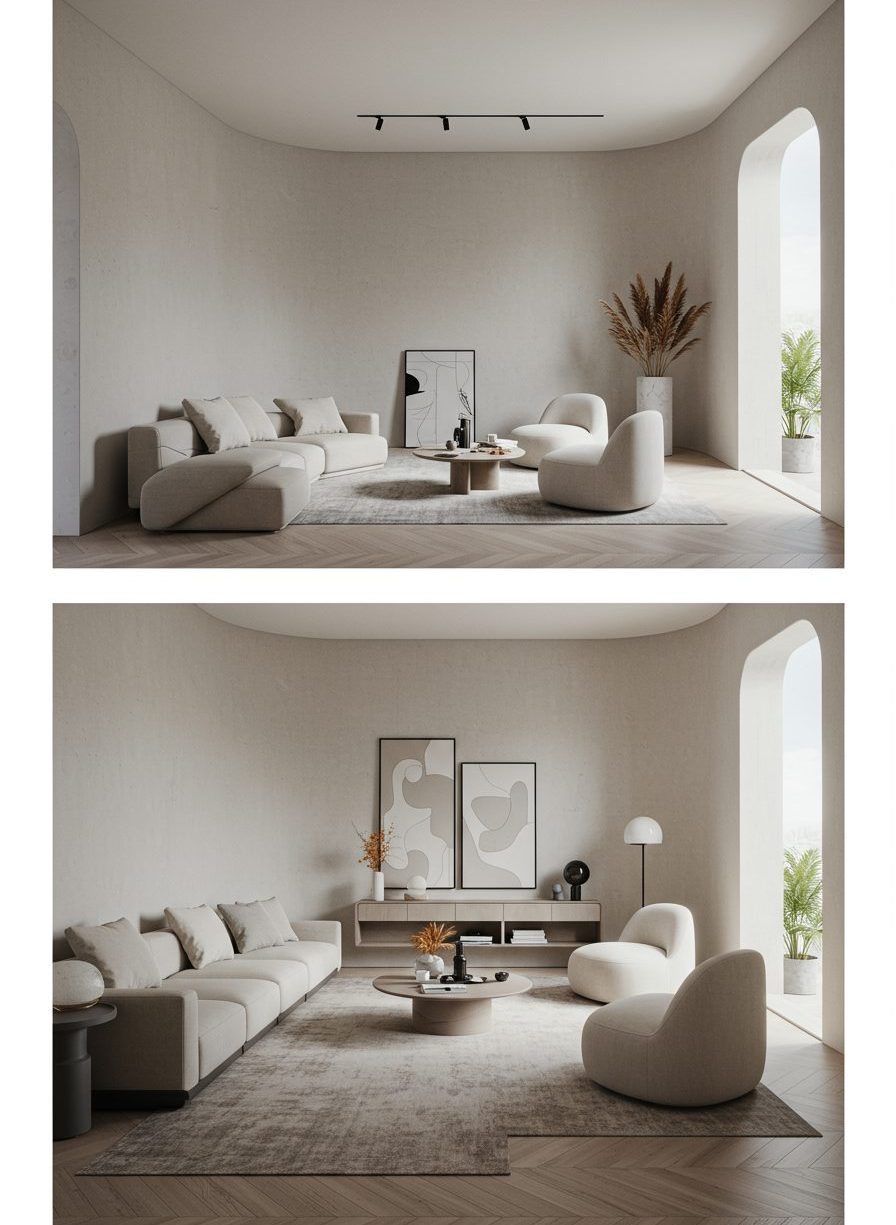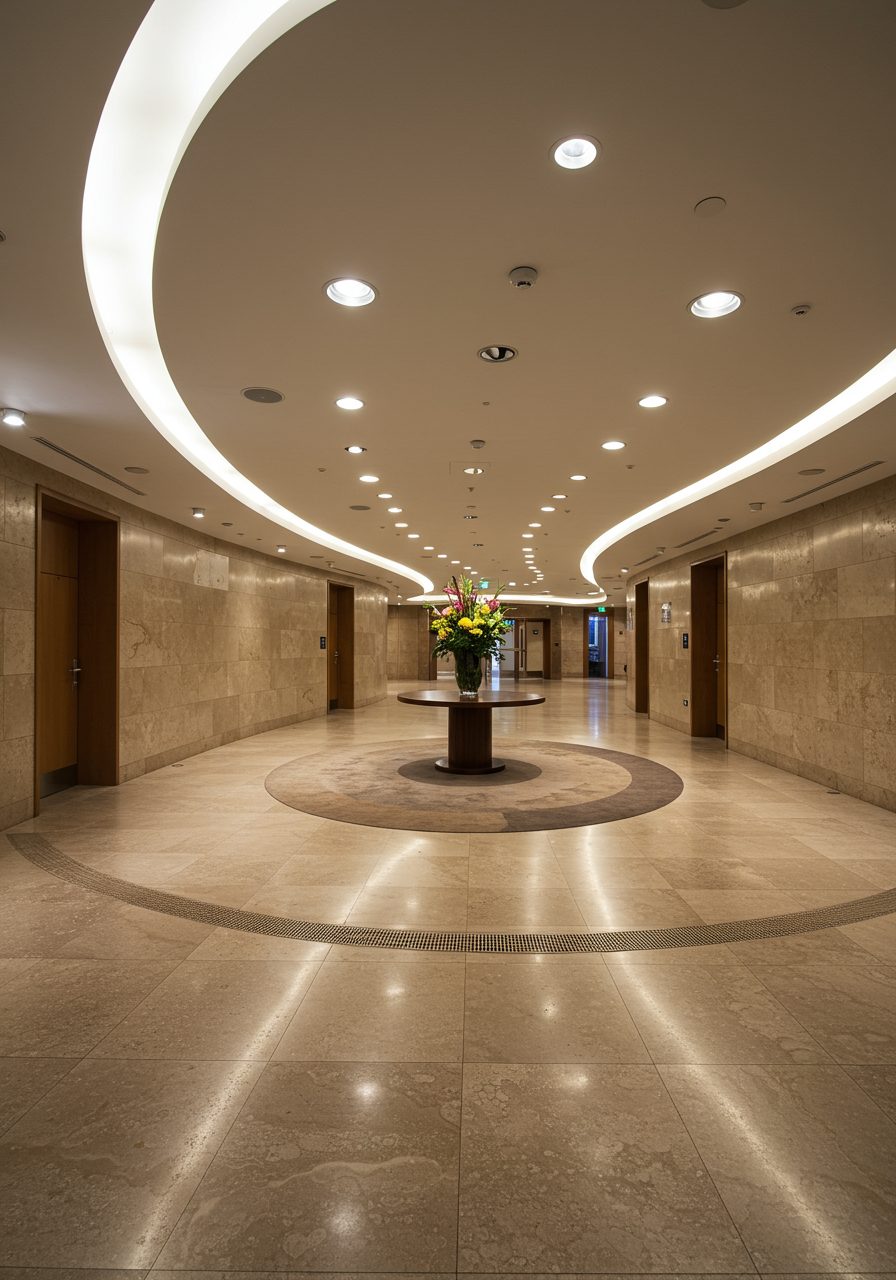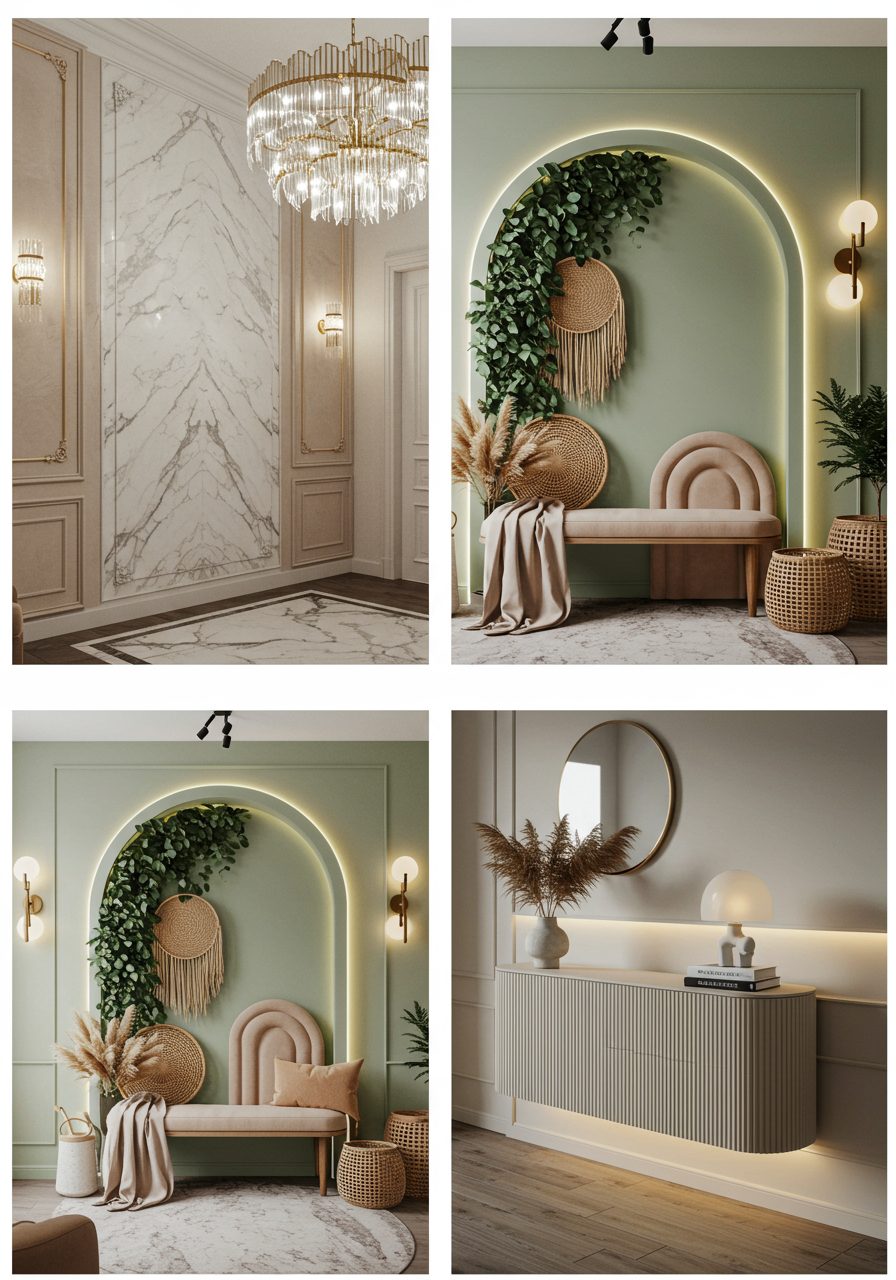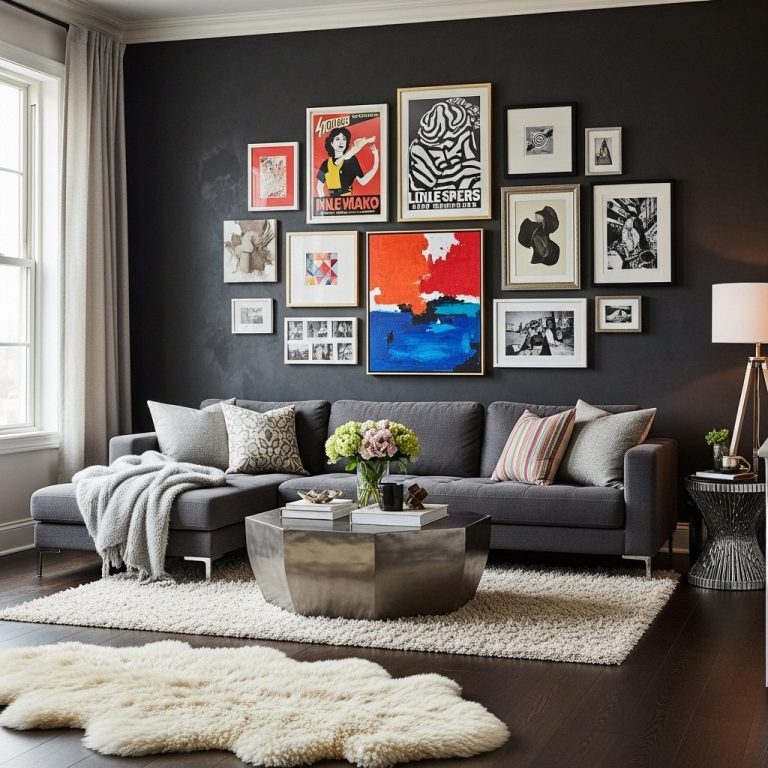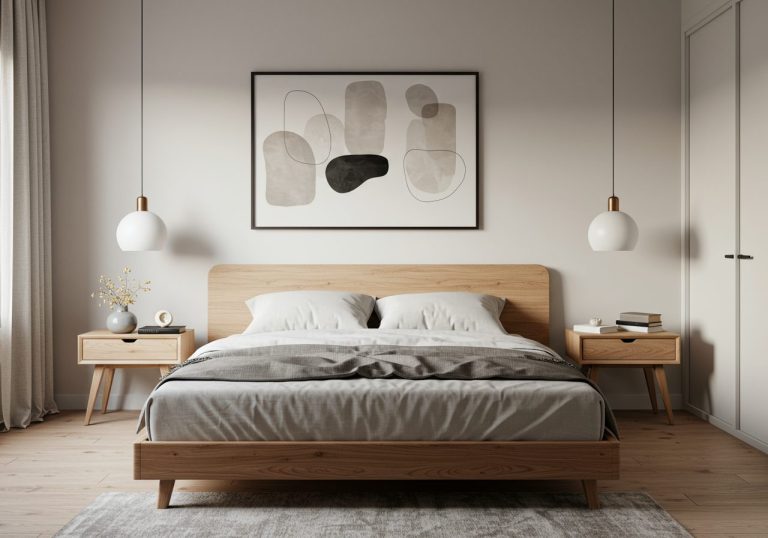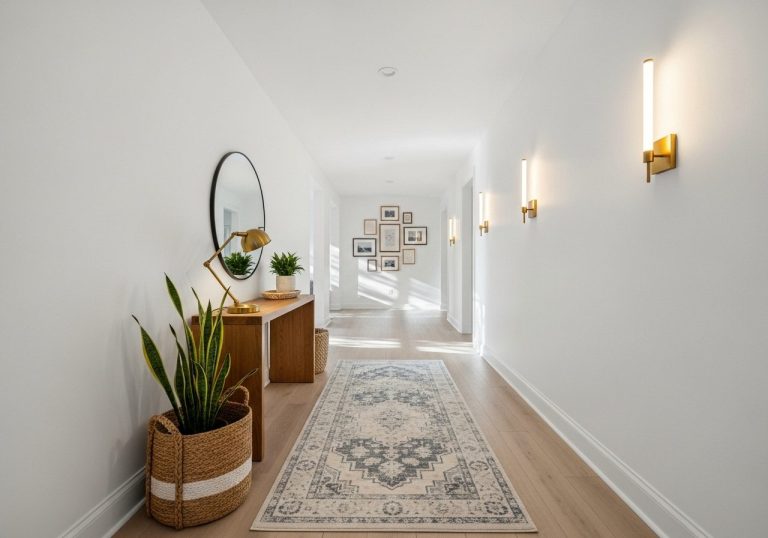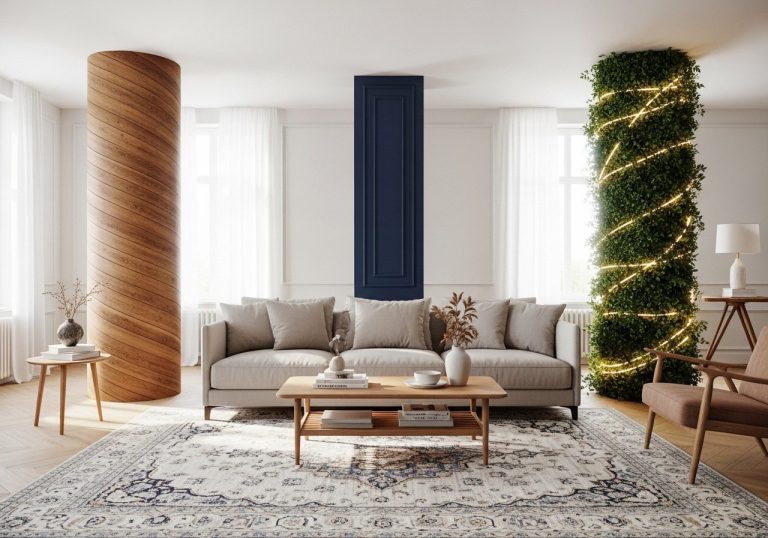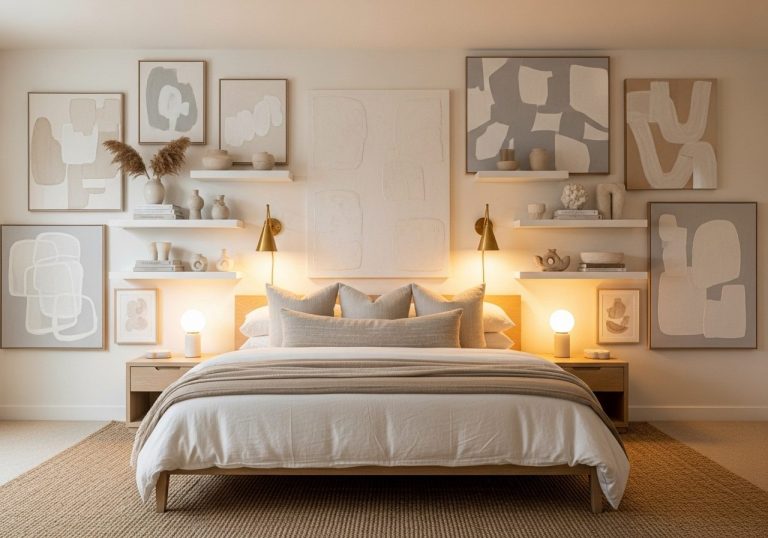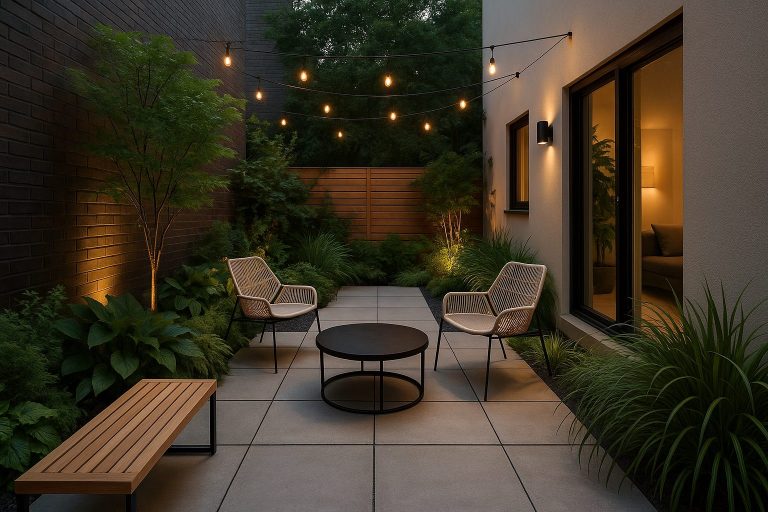How to Decorate a Curved Wall Entryway with Style and Function
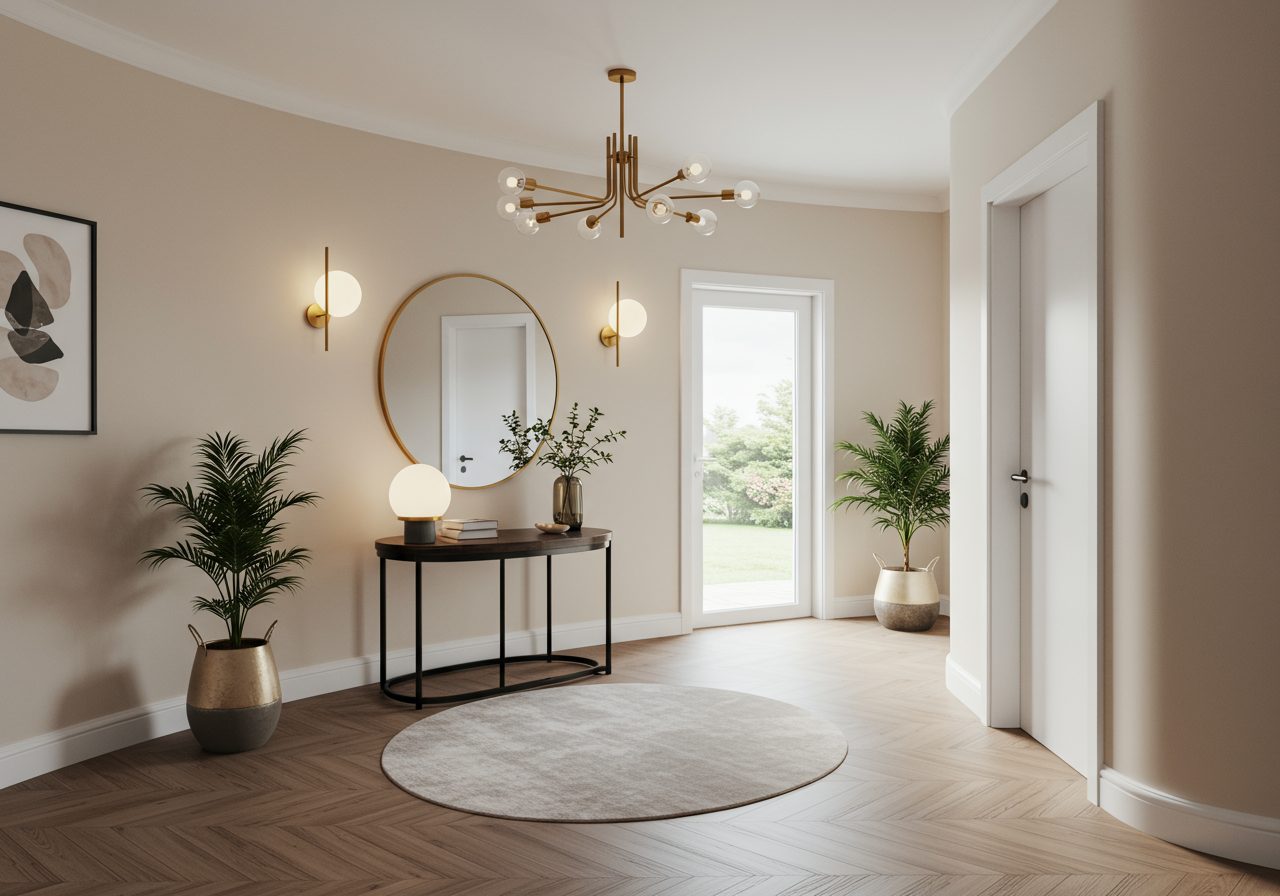
Table of Contents
- 1. Choose Furniture that Complements a Curved Wall Entryway
- 1.1. Round Console Table or Curved Bench
- 1.2. Compact Accent Chair or Sculptural Seat
- 1.3. Storage Options That Don’t Crowd the Flow
- 2. Accentuate the Curve with Lighting & Fixtures
- 2.1. Wall Sconces on Curved Surfaces
- 2.2. Overhead Fixtures: Pendants or Slim Chandeliers
- 2.3. Layered Lighting with Table & Floor Lamps
- 3. Wall Treatments to Define a Curved Wall Entryway
- 3.1. Paint & Accent Color Strategy
- 3.2. Paneling, Wainscoting & Moldings
- 3.3. Wallpaper & Textures
- 4. Decor & Art for Curved Wall Entryway
- 4.1. Mirrors & Artwork
- 4.2. Plants & Vases
- 4.3. Seasonal & Rotating Décor
- 5. Flooring & Rugs that Ground a Curved Wall Entryway
- 5.1. Round or Oval Area Rug
- 5.2. Durable & Stylish Flooring Materials
- 5.3. Step & Stairs Rug Runners
- 6. Spatial Planning & Clearance for a Curved Wall Entryway
- 6.1. Traffic Flow & Furniture Placement
- 6.2. Visual Balance & Proportion
- 6.3. Architectural Integration
- 7. Add Architectural Features to a Curved Wall Entryway
- 7.1. Niche Alcoves or Inset Shelving
- 7.2. Arched Door Frames or Curved Molding
- 7.3. Ceiling Embellishments to Echo the Curve
- 8. Create a Cohesive Color Palette for a Curved Entryway
- 8.1. Monochromatic or Analogous Palettes
- 8.2. Accents in Contrast or Texture
- 8.3. Tie Wall Colors to Flooring and Décor
- 9. Use Smart Entryway Storage for Curved Wall Layouts
- 9.1. Built-In Cabinets with Rounded Fronts
- 9.2. Open Cubbies or Floating Entry Shelves
- 9.3. Mirror-Fronted or Glass-Faced Units
- 10. Style a Curved Entryway for Personality & First Impressions
- 10.1. Entry Table Styling with Layers
- 10.2. Signature Piece: Art or Sculpture
- 10.3. Scent, Sound & Seasonal Touches
- 11. Common Mistakes to Avoid When Decorating a Curved Wall Entryway
- 11.1. Forcing Linear Furniture
- 11.2. Ignoring Wall Height or Ceiling Lines
- 11.3. Overdecorating the Curve
- 12. Entryway Safety & Accessibility Considerations
- 12.1. Non-Slip Entry Rugs and Flooring
- 12.2. Adequate Lighting and Smart Controls
- 12.3. Space for Wheelchairs or Strollers
- 13. Real-Life Inspiration: Curved Wall Entryway Examples
- 13.1. Luxury Home with Marble Round Entry Table
- 13.2. Small Apartment with Boho Bench Entry
- 13.3. Contemporary Home with Floating Console
- 14. FAQs – How to Decorate a Curved Wall Entryway
- 15. Final Thought How to Decorate a Curved Wall Entryway with Style and Function
Curved entryways offer a unique canvas for design—leveraging their shape can create visual flow and memorable impressions. Decorating a curved wall entryway requires thoughtful choices in furniture, lighting, finishes, and layout.
Key takeaways:
- Play to the curve: use round tables, rugs, or accent furniture.
- Layer lighting: combine sconces, pendants, and lamps.
- Wall treatments matter: paneling, paint, wallpaper, trim can define the curve.
- Balance style & clearance: scale pieces appropriately for flow.
- Add personality: art, mirrors, plants, seasonal décor amplify aesthetics.
Choose Furniture that Complements a Curved Wall Entryway
Round Console Table or Curved Bench
- A round console table fits the curvature naturally and prevents awkward angles.
- A curved upholstered bench echoes the wall and provides seating/storage.
- Ideal diameter: table sizing = wall arc length × 0.5–0.6, ensuring flow.
Compact Accent Chair or Sculptural Seat
- One armless chair with a side table creates an inviting vignette.
- Seating depth: keep ≤ 20″ to not obstruct entry traffic.
Storage Options That Don’t Crowd the Flow
- Use slender curved cabinets or floating shelves.
- Integrate baskets or hidden storage to maintain minimalism.
Accentuate the Curve with Lighting & Fixtures
Wall Sconces on Curved Surfaces
- Add sconces spaced 30–36″ apart.
- Mount at about 66″ from the floor for best results.
Overhead Fixtures: Pendants or Slim Chandeliers
- Install a centered pendant or slim chandelier that mirrors the wall arc.
Layered Lighting with Table & Floor Lamps
- Accent lighting on tables or corners enhances atmosphere.
- Use cordless or slim-profile options.
Wall Treatments to Define a Curved Wall Entryway
Paint & Accent Color Strategy
- Paint the curved wall a standout color: adobe, deep blue, or soft grey.
- Contrast with neutral surrounding walls.
Paneling, Wainscoting & Moldings
- Use flexible paneling to highlight the curve’s form.
- Vertical battens or beadboard add elegance.
Wallpaper & Textures
- Choose subtle textures or patterns that follow the arc.
- Slats or ribbed wood can visually ground the space.
Decor & Art for Curved Wall Entryway
Mirrors & Artwork
- A round mirror fits best—center it above your console.
- Gallery layout? Curve the frames along the wall’s shape.
Plants & Vases
- Add height with indoor plants like palms or olive trees.
- Use vases with tall branches for visual balance.
Seasonal & Rotating Décor
- Swap in seasonal flowers, wreaths, or candles.
- Use a large basket for rotating throws or cushions.
Flooring & Rugs that Ground a Curved Wall Entryway
Round or Oval Area Rug
- A round rug mirrors the wall shape.
- Size rule: diameter ≈ curve length ÷ 2.
Durable & Stylish Flooring Materials
- Entry-friendly: marble, tile, engineered wood, or terrazzo.
Step & Stairs Rug Runners
- For staircases, use a runner with curved or cascading edge.
Spatial Planning & Clearance for a Curved Wall Entryway
Traffic Flow & Furniture Placement
| Furniture | Placement Tip | Space Needed |
|---|---|---|
| Console table | Centered on the curve | 12″ depth |
| Rug | Beneath main furniture, allow 3′ clearance | — |
| Accent chair | Offset at curve’s end | ≤20″ depth |
Visual Balance & Proportion
- Fewer, larger objects look better than many small items.
Architectural Integration
- Match furniture scale and trim with wall curvature.
Add Architectural Features to a Curved Wall Entryway
Niche Alcoves or Inset Shelving
- Add built-in alcoves:
- Width: 12–18″
- Depth: 6–8″
- Height: 24–48″
Arched Door Frames or Curved Molding
- Use flexible molding to complement the wall's shape.
Ceiling Embellishments to Echo the Curve
- Try a tray ceiling or LED cove lighting to enhance dimension.
Create a Cohesive Color Palette for a Curved Entryway
Monochromatic or Analogous Palettes
- Match tones for harmony: sage + olive, beige + ivory.
Accents in Contrast or Texture
| Palette Style | Colors Used | Design Impact |
|---|---|---|
| Monochromatic | Ivory, sand | Open and airy |
| Analogous | Sage, olive | Natural and soft |
| Complementary | Blue, copper | Bold and artistic |
Tie Wall Colors to Flooring and Décor
- Reflect tones from rugs and ceiling into wall colors.
Use Smart Entryway Storage for Curved Wall Layouts
Built-In Cabinets with Rounded Fronts
- Match wall curvature for seamless storage.
Open Cubbies or Floating Entry Shelves
- Combine open bins and closed storage in one unit.
Mirror-Fronted or Glass-Faced Units
- Reflect light and make space feel larger.
Style a Curved Entryway for Personality & First Impressions
Entry Table Styling with Layers
- Use the 3-5-7 rule: group items in odd numbers.
- Layer textures and heights.
Signature Piece: Art or Sculpture
- Try sculptural wall pieces or asymmetrical abstract art.
Scent, Sound & Seasonal Touches
- Use diffusers or smart speakers.
- Hang eucalyptus or pine wreaths in winter.
Common Mistakes to Avoid When Decorating a Curved Wall Entryway
Forcing Linear Furniture
- Don’t push square tables onto curved walls.
- Use round or curved profiles.
Ignoring Wall Height or Ceiling Lines
- Mount mirrors and lights at the correct height (≈57–66″).
Overdecorating the Curve
- Avoid overcrowding—space helps the curve shine.
Entryway Safety & Accessibility Considerations
Non-Slip Entry Rugs and Flooring
- Use rug pads and textured flooring to avoid slips.
Adequate Lighting and Smart Controls
- Motion sensor lights boost nighttime safety.
Space for Wheelchairs or Strollers
- Leave at least 36″ clearance throughout the entry path.
Real-Life Inspiration: Curved Wall Entryway Examples
Luxury Home with Marble Round Entry Table
- Marble pedestal table + chandelier + curved staircase.
Small Apartment with Boho Bench Entry
- Painted sage wall + wood bench + woven baskets.
Contemporary Home with Floating Console
- Curved metal console with LED lighting underneath.
FAQs – How to Decorate a Curved Wall Entryway
How do you hang art on a curved wall?
Use rail hooks or flexible adhesive strips. Follow the arc line when hanging.
What kind of furniture works best on a curved wall?
Curved benches, round tables, and arched bookshelves.
Can you wallpaper a curved wall?
Yes, flexible wallpapers work well—especially with geometric or botanical prints.
How can I style a narrow curved entryway?
Use minimal furniture, mirrors, floating shelves, and soft lighting.
What’s the best rug shape for a curved entryway?
Round or oval rugs that center the entry furniture layout.
Do curved entry walls reduce space?
No, they can improve visual flow and eliminate awkward corners.
Final Thought How to Decorate a Curved Wall Entryway with Style and Function
A curved wall entryway is more than just a structural feature—it’s an opportunity to make a lasting first impression. By choosing furniture that follows the flow, layering lighting, playing with color and texture, and respecting spatial dynamics, you can transform this unique architectural element into a statement of elegance and intention. The key lies in embracing the curve rather than fighting it—letting it guide your décor choices with harmony, function, and flair.

